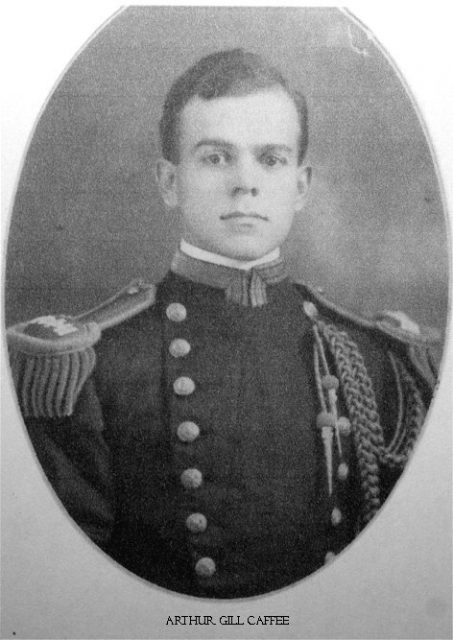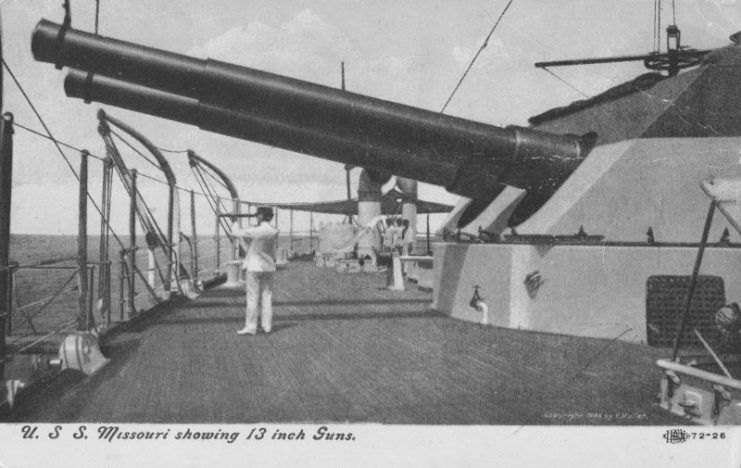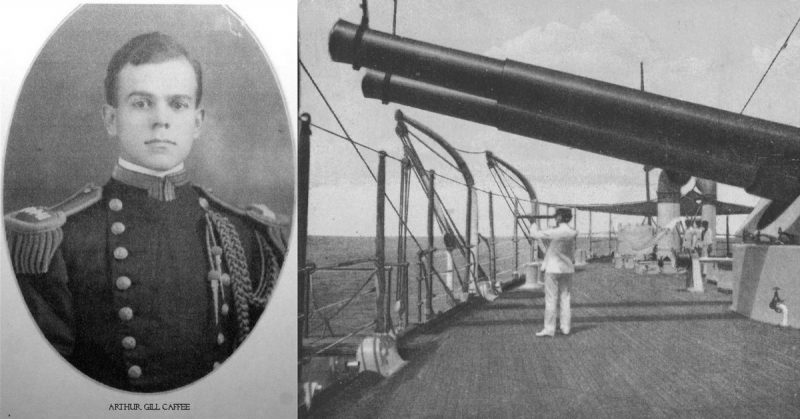War History online proudly presents this Guest Piece from Jeremy P. Ämick, who is a military historian and writes on behalf of the Silver Star Families of America.
Arthur Gill Caffee had large shoes to fill when he decided to pursue a career in the United States Navy. For nearly three decades, his father, Colonel William Caffee of Carthage, Missouri, commanded the Second Regiment of the Missouri Infantry, which included service during the Spanish-American War.
Though the elder Caffee was certainly proud that his young son was inspired to follow his soldierly example, it would be a decision that would result in great emotional turmoil for the patriarch.
Arthur Caffee was born on December 20, 1882 and raised in the community of Carthage. His father, William Caffee, “procured (for Arthur) an appointment to the United States Naval Academy … in 1900,” reported The St. Louis Star and Times on November 20, 1910.
The newspaper article goes on to explain that at a time when the course of study at the academy spanned a period of six years, the young Arthur Caffee was able to graduate in only four “because of the pressing demand for officers in the rapidly increasing American Navy.”
An article accessed through the website of the Naval History and Heritage Command notes that after the end of the Spanish-American War, “the United States was thrust into the mainstream of international affairs and gained status as a world power, acquiring as possessions the Philippines and Guam in the Pacific, then Puerto Rico in the Caribbean.”
The article goes on to explain that in 1904, the same year Caffee graduated from the academy, the U.S. Navy established a naval base at Guantanamo Bay, Cuba. This, along with the United States’ acquisitions from the Spanish-American War, inspired President Roosevelt to stress “the upgrading and expansion of the U.S. fleet to protect American interests abroad.”

Upon graduation from the academy, Caffee was appointed as an ensign aboard the USS Missouri (BB-11)—a Maine-class battleship that was commissioned in December 1903 and the second U.S. Navy vessel to carry the name of Caffee’s home state.
Shortly after his assignment to the USS Missouri, an unexpected tragedy unfolded, resulting in the death of nearly three dozen sailors but demonstrating the heroic spirit of the young ensign from a rural Missouri community.
The St. Louis Star and Times wrote that the ship was in Pensacola Bay, Florida, on April 13, 1904, when it “was shaken from stem to stern by the explosion of 2,000 pounds of powder in a 12-inch gun of the after-turret and handling room of the battleship Missouri.”
The sailors then scrambled to flood the after-turret with water to stifle the fire and orders were issued for no one to venture into the “death chamber,” the newspaper further explained. Ensign Caffee reportedly ignored these commands and dove into the water to pull out any survivors but was “overcome in his efforts,” and had to himself be pulled to safety by his fellow sailors.
On that depressing day, a reported 32 sailors lost their lives in the explosion. Despite his disregard for the orders given to not attempt a rescue, Caffee was later recognized for his efforts and decorated with medals from Congress in honor of his bravery.
The young ensign served in other naval assignments including service aboard the USS Connecticut, soon reaching the rank of lieutenant. However, he was later appointed an inspector of ordnance at Indianhead Proving Grounds in Washington, D.C.—an assignment that returned him to the USS Missouri and heralded the final chapter in Caffee’s brief naval career.

“FOUR MEN KILLED IN EXPLOSION” shrieked the headline of an article in the Daily Arkansas Gazette (Little Rock, Arkansas) on November 20, 1910. The article went on to explain, “Four men were killed today by the premature explosion of a five-inch, 51-caliber gun at the Indianhead Proving Grounds … The breech lock of the gun, which, being tested, flew backward into the crew which was firing the gun.”
Lt. Caffee, who was the officer in charge of the testing of the gun, was killed alongside his battery foreman, battery attendant, and an ordnance man. Survived by a wife and two young daughters, the body of the 27-year-old Caffee was laid to rest in Arlington National Cemetery.
Several months later, on March 16, 1911, Lt. Caffee’s mother passed away after a stroke she suffered the previous day. Her obituary in the Carthage Evening Press reported that her health had suffered greatly since the loss of her son.
Col. Caffee would not only have to suffer through the loss of his spouse and eldest son but in 1918, he had to bury his only surviving son when he died after developing pneumonia. In 1923, Col. Caffee passed away and was laid to rest alongside his wife in Park Cemetery in Carthage.
Though his death appeared to herald the beginning of a succession of tragedies for the Caffee family, the passing of Lt. Arthur Caffee represented a legacy of service and sacrifice made by one family on behalf of his state and nation and demonstrated the impact of loss endured by a proud father.
“Col. Caffee’s lifelong ambition,” reported The St. Louis Star and Times on November 20, 1910, “has been to see the day when his seagoing and warring son would wear with grace the insignia of an American Admiral.”
The newspaper added, “These hopes were shattered Saturday in the reports of the deaths of Lieutenant Caffee and three subordinates …”
